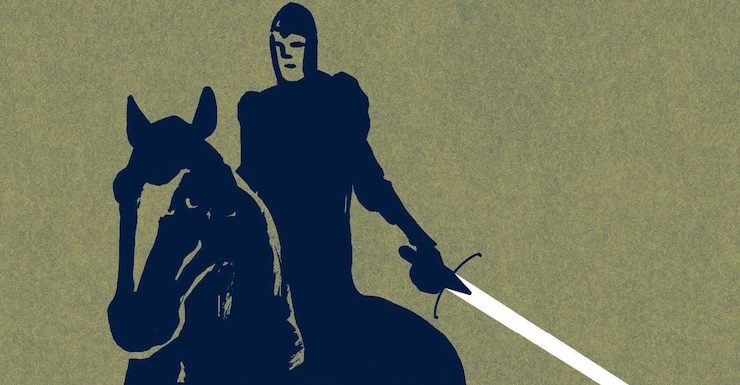Some stories never lose their grip on us. They compel us to recast them again and again, in different ways. This goes back to before the birth of writing: For every myth preserved in written form there were, in swirling echoes around it, variations of the story that did not survive—but are just as true.
A story of sufficient power can wear many faces. The Greek tragedians understood this, drawing endlessly on their mythology to give us alternate versions of Oedipus, of Iphigenia, of Electra. That tradition, of recasting powerful stories, endures to this day.
Here are five of my favorite retellings.
Beauty by Robin McKinley
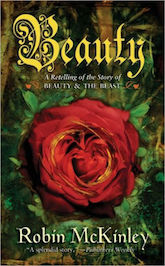 There are two kinds of Robin McKinley fans: Those who prefer Beauty, her debut novel and initial retelling of Beauty and the Beast, and those who prefer Rose Daughter. I have to admire the guts it took to retell the same fairy tale twice, but I am firmly in the Beauty camp: Simpler in its prose stylings than Rose Daughter, Beauty combines the sumptuous imagery of fairy tales with a no-nonsense, down-to-earth protagonist.
There are two kinds of Robin McKinley fans: Those who prefer Beauty, her debut novel and initial retelling of Beauty and the Beast, and those who prefer Rose Daughter. I have to admire the guts it took to retell the same fairy tale twice, but I am firmly in the Beauty camp: Simpler in its prose stylings than Rose Daughter, Beauty combines the sumptuous imagery of fairy tales with a no-nonsense, down-to-earth protagonist.
Beauty is not badass, nor kickass, just very sensible—a wonderful contrast to the fairy tale elements thrust upon her. She is further grounded by her commitment to family—her father and sisters, who love her in turn. Written in the first person, the narrative voice is a joy—warm and full of humor. Somehow a book told from the perspective of a commonsense character ends up pure magic.
“The Bloody Chamber” by Angela Carter
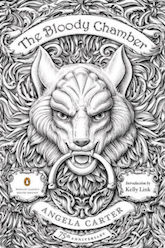 The titular story of a collection, Angela Carter’s “The Bloody Chamber” is justly famous. It is a horror story, which makes sense—like many fairy tales, the tale of Bluebeard, which forms the basis for “The Bloody Chamber,” is horrific. We see cheap versions of Bluebeard on crime procedurals—serial killers who keep the gruesome remnants of women shut away. What makes “The Bloody Chamber” a classic is Carter’s language, which is peerless; and the way she lends psychological dimension to a tale that in most hands would be grist for a slasher.
The titular story of a collection, Angela Carter’s “The Bloody Chamber” is justly famous. It is a horror story, which makes sense—like many fairy tales, the tale of Bluebeard, which forms the basis for “The Bloody Chamber,” is horrific. We see cheap versions of Bluebeard on crime procedurals—serial killers who keep the gruesome remnants of women shut away. What makes “The Bloody Chamber” a classic is Carter’s language, which is peerless; and the way she lends psychological dimension to a tale that in most hands would be grist for a slasher.
Physical details, especially regarding objects of luxury and beauty, are key in fairy tales. Carter conveys with precision every detail of the Marquis’s castle; its furnishings, hoarded treasures, and splendid isolation. With the same attention to detail she conveys the horror of the subterranean chamber that is the Marquis’s secret. That each is joined to the other—dark and light, horror and beauty—is, in part, what the tale is about.
The Outlaws of Sherwood by Robin McKinley
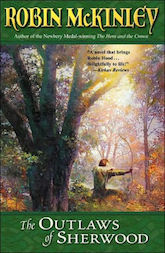 Yes, I’m doing it—I’m mentioning the same author twice. Robin McKinley is a force to be reckoned with in the field of retellings, and not only can I mention her work twice—I could talk about it even more if I had the space. For example, her retelling of “The Twelve Dancing Princesses,” collected in The Door in the Hedge, is beyond gorgeous. But for the sake of this piece, I’ll stick to talking about my favorite of her retellings: The Outlaws of Sherwood.
Yes, I’m doing it—I’m mentioning the same author twice. Robin McKinley is a force to be reckoned with in the field of retellings, and not only can I mention her work twice—I could talk about it even more if I had the space. For example, her retelling of “The Twelve Dancing Princesses,” collected in The Door in the Hedge, is beyond gorgeous. But for the sake of this piece, I’ll stick to talking about my favorite of her retellings: The Outlaws of Sherwood.
On its face, The Outlaws of Sherwood seems like a de-glamorization of the Robin Hood legend. McKinley’s Robin Hood is a gloomy pragmatist whose fate was thrust upon him; who is obsessed, more than anything, with what will “keep the rain out.” He has no time for ideals or mischief. Unlike the legendary figure, he doesn’t spend his days brainstorming how to make a fool of the Sheriff of Nottingham. His goal is survival, for himself and his band.
But he has wit, and is surrounded with people of varying degrees of idealism: chief among them the complex, enigmatic Marian. As the tale progresses and deepens, the legendary aspect of the story begins, piece by piece, to surface. In the end, what Robin McKinley has accomplished so brilliantly is show how a band of real people, raw and human, can with the passage of time be flattened, illumined, into lasting fame.
The Once and Future King by T.H. White
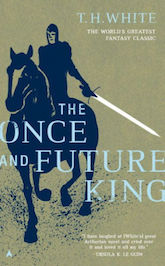 No list of classic retellings would be complete without The Once and Future King, T.H. White’s epic of King Arthur based on Sir Thomas Malory’s Le Morte D’Arthur. So much can be said about this magnificent book—for one thing, how funny it is; how the author revels in anachronisms and asides to the reader; how his passion for the material is burned into every page.
No list of classic retellings would be complete without The Once and Future King, T.H. White’s epic of King Arthur based on Sir Thomas Malory’s Le Morte D’Arthur. So much can be said about this magnificent book—for one thing, how funny it is; how the author revels in anachronisms and asides to the reader; how his passion for the material is burned into every page.
But what I love most about The Once and Future King is T.H. White’s psychological renderings of the characters, and how complex and tortured they can be. And how that inner torment lends itself perfectly to tragedy, which is what this epic is at its core (which you know going in, because it’s based on a book that literally means “The Death of Arthur”). Lancelot, enshrined in Arthurian literature as a handsome hero, here is hideously ugly and filled with self-loathing. His commitment to becoming the greatest knight in the world is born of that self-loathing, an attempt to conquer himself.
Other standout characterizations include Gawaine of Orkney, who is—at least in English versions of the legend—one of the most important of Arthur’s knights. White gives us a dark vision of the Orkney brothers, who are raised with a thirst for vengeance. What makes Gawaine a compelling creation is his complexity: he shares his brothers’ violence and impetuousity, while wishing desperately to be a better man.
Malory’s work is a vibrant, colorful tapestry; White gives it dark, human dimensions.
The King Must Die by Mary Renault
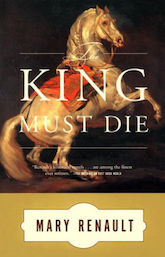 It’s too on the nose to call Mary Renault a goddess, but The King Must Die is written in such a way as to seem divinely inspired. This rendition of the myth of Theseus is powered by some of the most exquisite writing I’ve ever encountered. From the origins of Theseus in his home village of Troizen, to his intrigues in the royal palace of Athens, and—most of all—to the maze of the minotaur on Crete, Renault immerses the reader fully in a world that feels grander and more real than our own. This is the essence of epic: To make what is past, and strange to us, take on overpowering life.
It’s too on the nose to call Mary Renault a goddess, but The King Must Die is written in such a way as to seem divinely inspired. This rendition of the myth of Theseus is powered by some of the most exquisite writing I’ve ever encountered. From the origins of Theseus in his home village of Troizen, to his intrigues in the royal palace of Athens, and—most of all—to the maze of the minotaur on Crete, Renault immerses the reader fully in a world that feels grander and more real than our own. This is the essence of epic: To make what is past, and strange to us, take on overpowering life.
Renault writes utterly convincingly of the Minoans, about whom we know so little; of bull dances, of the splendor of Minos’s palace, of Theseus’s adventure at the heart of the maze. She took an immortal myth and from it made a book deserving of similar immortality, because it is that good.
Ilana C. Myer has worked as a journalist in Jerusalem and a cultural critic for various publications. As Ilana Teitelbaum she has written book reviews and critical essays for The Globe and Mail, the Los Angeles Review of Books, Salon, and the Huffington Post. Last Song Before Night was her first novel, followed by Fire Dance. She lives in New York. Find her on Twitter @IlanaCT.










